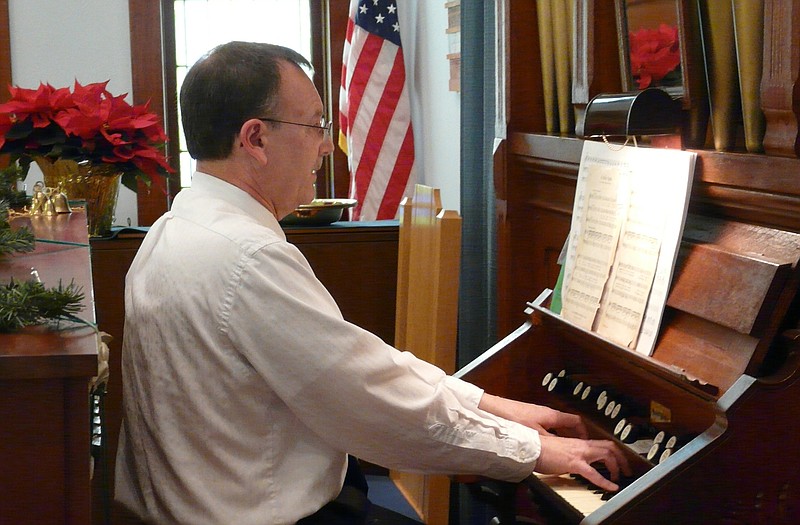JAMESTOWN - Every December, Sam Lucas - a former area music teacher who now is the organist for Clinton's United Methodist Church - comes back to Jamestown and gives the Grace Methodist Church organ a workout.
"Another thing that you have in common with the people of 1901 in this very room is that you are hearing the very same sounds that they were hearing," Lucas told about 30 people gathered in the church sanctuary Sunday afternoon for Lucas' annual Christmas concert.
In 1901, the congregation paid almost $650 for John Hinners of the Hinners and Albertsen Organ Co. of Pekin, Illinois, to build the pipe organ.
"He was a German Methodist, just like the founders of this church," Lucas noted, "and John Hinners was, actually, here and played the first concert" after the organ was installed.
It was shipped by train to California, then hauled by horse-drawn, or ox-drawn, carts from California to Jamestown.
Only one major change has been made to the organ over the years, Lucas said.
"When it was built, there was a pump, and some of the people from this church were pumping" to push air into the pipes, he said. "If you crawl back there, you can see some initials - where people maybe got bored during the sermon and carved their initials back there.
"It worked OK unless they fell asleep - and you wanted to play, and there was no air.
"They put in (electric) bellows in the 1930s."
The organ also was renovated and refurbished in 1978.
But, Lucas told the News Tribune, except for changing the billows, "It is as it was when it was built.
"No one has altered the sounds of it - which happens so much. No one has added to it.
"It's been maintained and restored to its original condition."
The Organ Historical Society several years ago designated the organ "for recognition as an instrument of exceptional historic merit, worthy of preservation."
That honor is noted in a framed award in the church entrance way, with the award also noting: "This plaque is to be held in trust for the Organ Historical Society by the owner of this organ, as long as the instrument is maintained in a manner consistent with its historical significance."
The Hinners company went out of business in the Depression, and the Quimby Organ Co. of Warrensburg now maintains the Jamestown organ.
That $650 cost would be about $18,571 today - still a good deal, Lucas noted, since it now costs "about $30,000" to build each "rank" of an organ, and the Jamestown organ has seven "ranks," worth $210,000 if built new.
A "rank" is a set of pipes designed to produce the same tone or "timbre" for one or more octaves of notes "covering the length of the keyboard," Lucas said.
Including sharps and flats for each octave, there are 12 pipes per octave - and several Internet sites note that some of the largest modern organs have more than 100 ranks.
The pipes are wood or metal, and each pipe is built to produce a specific note and sound.

